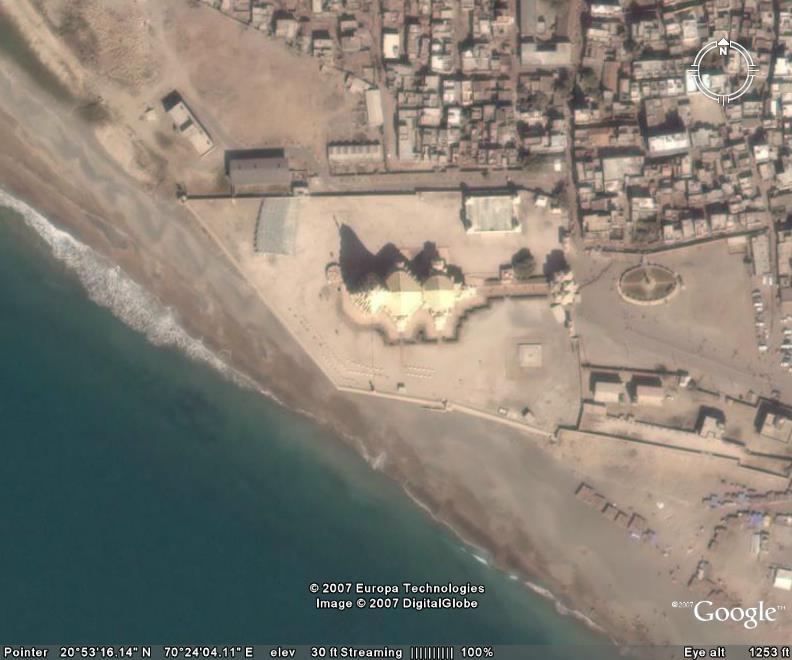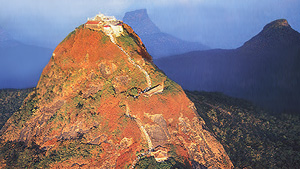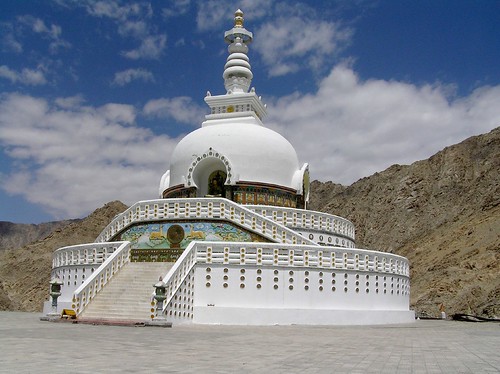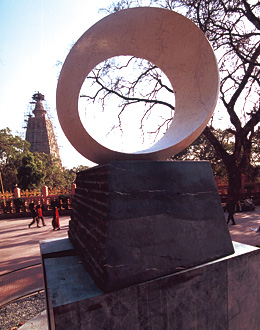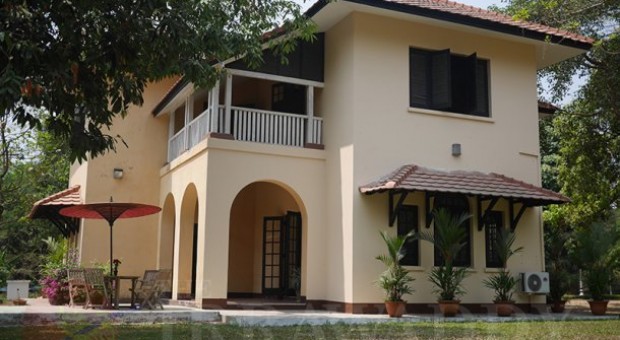
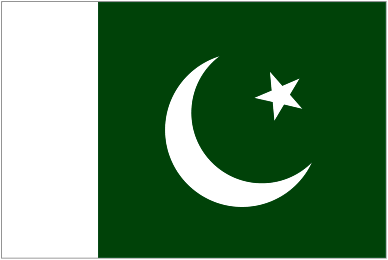
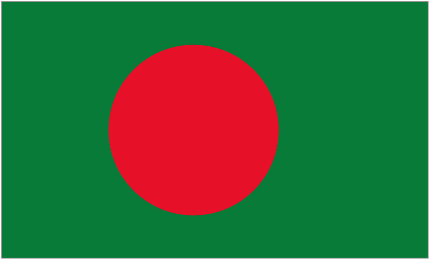
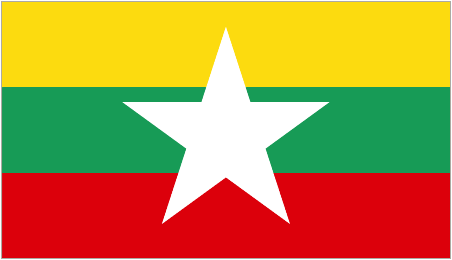
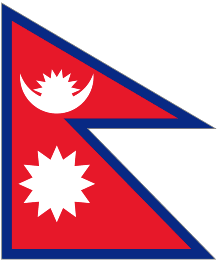
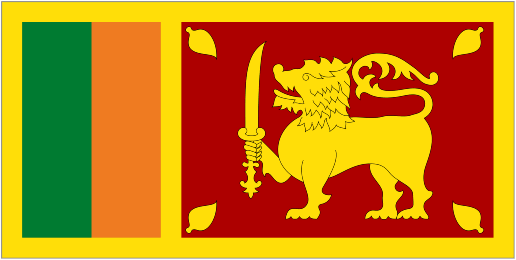

Peace Monuments in India,
Pakistan, Bangladesh, Myanmar,
Nepal & Sri Lanka
(Excluding Mahatma Gandhi)
Click here for notable peacemakers in India. | Click here for Gandhi monuments in India & Nepal. | Click here for Gandhi monuments outside India & Nepal.
Right click image to enlarge.
Third Century BCE - Shanti Stupa (aka Great Shanti Stupa), Sanchi, Madhya Pradesh (India). Originally commissioned by the emperor Ashoka the Great in the third century BCE. See Vishwa Shanti Stupa in New Delhi (2007).
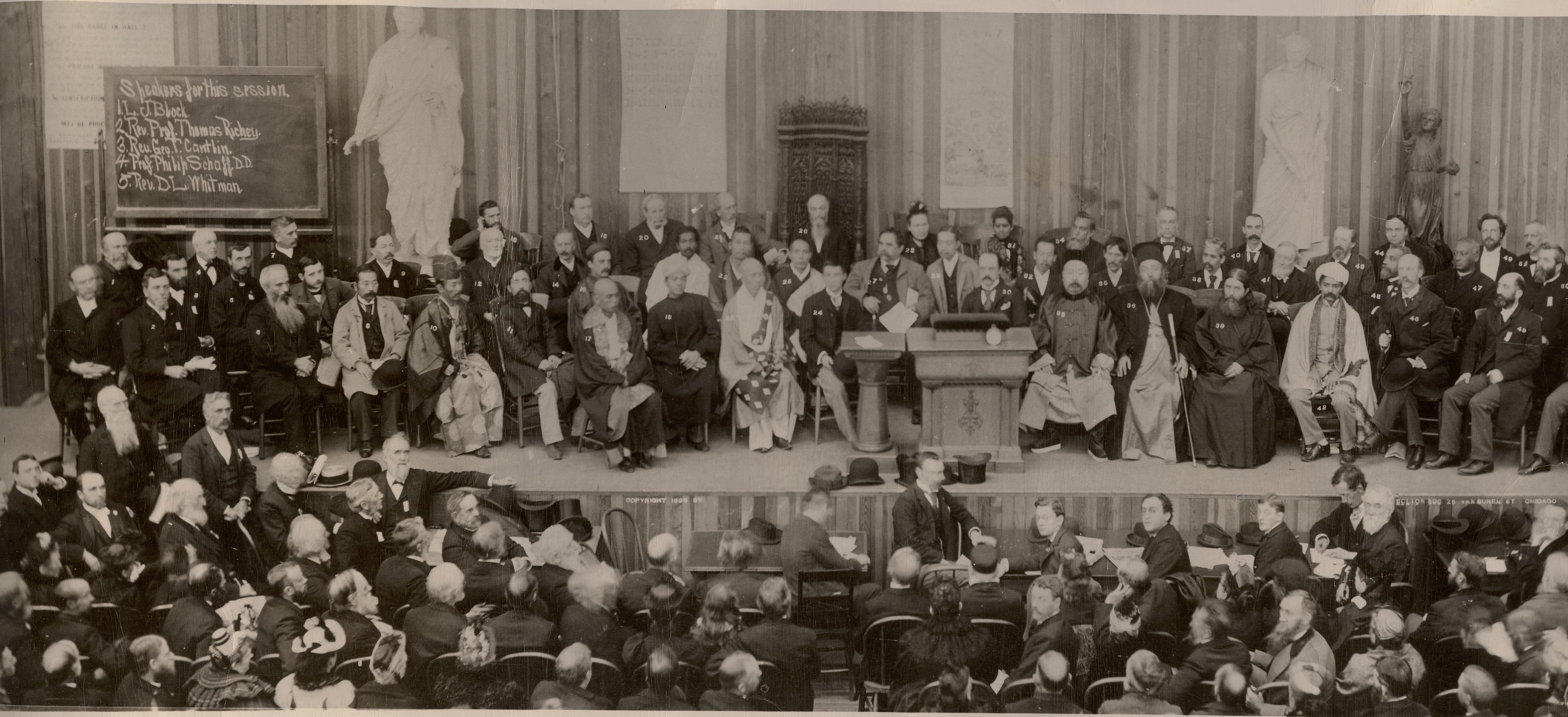

September 11-27, 1893 - First Parliament of the World's Religions, Chicago, Illinois (USA). Concurrent with the World Columbian Exposition (Chicago World's Fair). Attended by 4,000 delegates from all over the World. Organized by Unitarian minister Reverend Jenkin Lloyd Jones [1843-1918]. Addresses included an introducton to Hinduism by Swami Vivekananda [1863-1902] and "The Religious Mission of the Colored Race" by Fannie Barrier Williams [1855-1944], a black member of Jones's Unitarian church in Chicago. Attended by 75-year-old Frederick Douglass [c1818-1895].

June 30, 1918 - Peace Monument, Santa Cruz Higher Secondary School, Fort Kochi, Kerala (India). "Urges the world at war to embrace peace. The structure in three levels has been built by alumni and teachers of the school, run by Portuguese missionaries. Work on the monument began in 1914, when war broke out in Europe, and was completed in 1918. Inscribed on the monument are sayings by New Testament gospel writers Mathew, Mark, Luke and John, urging the God to shower mercy on people. The major carving is that of a rainbow & clouds with 'peace' inscribed on it. The monument in the courtyard of the school follows the Gothic style of architecture and has three sections. The four columns on each level stands for 12 pupils of Jesus Christ, whose statue stands atop the third level. The structure was constructed with limestone and brick under the supervision of Portuguese missionaries."

July 1928 - Institute of Himalayan Studies “Urusvati” (“Light of the Morning Star”), Kullu Valley, Hall Estate, Naggar, Kullu District, Himachal Pradesh (India). Founded by Russian artist Nicholas Roerich [1874-1947], creator of the Banner of Peace. Directed for the first ten years by his son, "Tibetologist" George Roerich [1902-1960] who spoke 30 languages. Now the Internatioanl Roerich Memorial Trust (IRMT).


May 1951 - Somanatha Temple, Sourashtra province, Gugerat (India). On Arabian Sea 2 km from port town of Veeraval. Dedicated by Rajendra Prasad (1st president of India) who said, "...the reconstruction of the Somnath Temple will be complete on that day when not only a magnificent edifice will arise on this foundation, but the mansion of India's prosperity will be really that prosperity of which the ancient temple of Somnath was a symbol.... The Somnath temple signifies that the power of reconstruction is always greater than the power of destruction." Discussed in Smith, Patrick (2010). Also see book by Romila Thapar.

1954 - Kabar Aye Pagoda (World Peace Pagoda), Yangôn/Rangoon (Myanmar/Burma). Located about 20 minutes drive to the north of downtown. Built by U Nu [1907-1995], one of the earlier prime ministers of Myanmar not long after her independence from the British, in dedication to the Sixth Buddhist Council (1954-56). This 111-feet-high pagoda measures 34 meters around the base.

February 21, 1963 - Shaheed Minar, Dhaka (Bangladesh). Commemorates those killed during the Language Movement demonstrations of February 21, 1952. Rebuilt several times. Replicas in London and Manchester (England).




About 1965 - Open Hand Monument, in "The Ditch of Consideration," Chandigahr, Punjab (India). Heavy copper hand 100 feet high rotates in the wind. Also looks like dove of peace. By French architect Le Corbusier [1887-1965] who said, "This sign of the Open Hand is a sign of peace and of reconciliation. [It] is meant to receive the created riches, and to distribute them to the peoples of the world. That should be the symbol of our epoch." Corbu made the overall plan for Chandigahr and designed some of the original buildings. Click here for air view.

1969 - Vishwa Shanti Stupa / World Peace Pagoda, Rajgir, Bihar (India). Nipponzan Myohoji Buddhist Order. "Pandit Jawaharlala Nehru [1889-1964] laid the foundation stone of first Shanti Stupa in Bihar state at Rajgiri [sic]." Built in marble on a 400 meter hill reached by an aerial ropeway. The four shining statues of Buddha are on the four sides of the stupa. Rajgir also has a so-called "Japanese temple."
Date? - World Peace Bell, Rajgir, Bihar (India). #4 of ten "Dharma Bells" of the Light of Buddhadharma Foundation International (LBDFI). "It was here that Gautama Buddha spent several months meditating, and preaching at Gridhra-kuta / Hill of the Vultures."
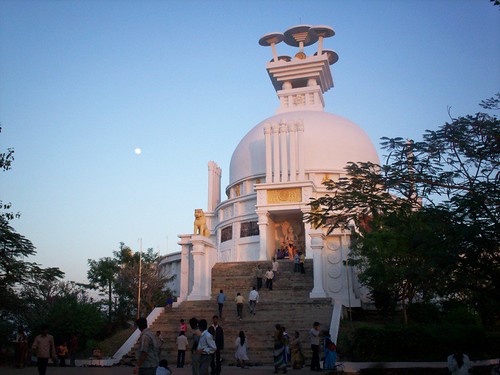
November 8, 1972 - Dhauligiri Shanti Stupa / Monument of Peace, near Bhubaneswar, Orissa (India). "Sri Nitya Nanda Kanungo, Governor of Bihar, decided to establish second Shanti Stupa at Dhauligiri in Orissa State. He formed Kalinga Nippon Buddha Sangh and became the chairman. Fujii Gurujii along with his young disciples helped in building the Stupa. Nipponzan Myohoji happily beard [sic] the entire cost considering it as a offering to Lord Buddha."
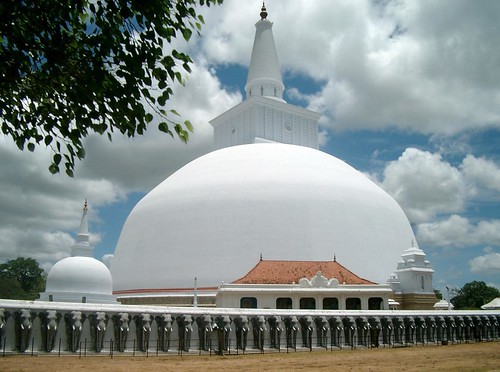
1978 - Peace Pagoda, Sri Pada (Sri Lanka). Nipponzan Myohoji Buddhist Order. Sri Pada means "Lord Buddha's sacred footprint" and is the name of "Buddhism's most sacred mountain" (right image).
March 5, 2012 - World Peace Bell, Sri Pada (Sri Lanka). #1 of ten "Dharma Bells" of the Light of Buddhadharma Foundation International (LBDFI). "The 21st World Peace Bell... Given by Venerable Tarthang Tulku on behalf of TNMC in honor of the 2600th year of Buddha’s enlightenment." Sri Pada is also known as Adam's Peak. "It is an important pilgrimage site, especially for Buddhists. Pilgrims walk up the mountain, following a variety of difficult routes up thousands of steps."
1981 - World Peace Bell, World Peace Bell Park, Shravasti, Uttar Pradesh (India). "This is a large metallic Bell gifted to India by Japan in 1981 to be erected in the sacred Buddhist city of Shravasti." Not related to the World Peace Bell Association of Tokyo (Japan).
Date? - World Peace Bell, Shravasti, Uttar Pradesh (India). #9 of ten "Dharma Bells" of the Light of Buddhadharma Foundation International (LBDFI). "In the grounds of the Burmese Temple near the entrance to the Jetavana." Shravasti "was one of the six largest cities in India during Gautama Buddha's lifetime."
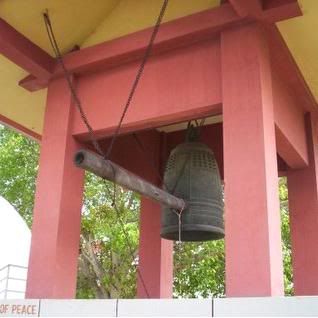


Date? - Bell of Peace, Indosan Nipponji / Japanese Temple, BodhGaya, Gaya District, Bihar, (India). Not related to the World Peace Bell Association of Tokyo (Japan).
Date? - World Peace Bell, Bodhgaya Bihar (India). #10 of ten "Dharma Bells" of the Light of Buddhadharma Foundation International (LBDFI). "Bodh Gaya is famous as it is the place where Gautama Buddha is said to have obtained Enlightenment (Bodhimandala)... It is the most important of the main four pilgrimage sites related to the life of Gautama Buddha, the other three being Kushinagar, Lumbini & Sarnath."



Date? - World Peace Pond, Swayambhunath Temple, Kathmandu (Nepal). Wall of the pond bears the World Peace Prayer "May Peace Prevail on Earth." Note globe on a lotus in the pond. Tourists call this the "money temple" because of its many free ranging monkeys.
1985 - Shanti Stupa, on hilltop in Cahngspa village, Ladakh, Jammu & Kashmir (India). Opened by the Dalai Lama. Has bird's eye view of Leh town & surrounding mountain peaks.


December 1986 - Bahá'í House of Worship (Lotus Temple), New Delhi (India). Click here for air view. Click here for Bahá'í Temples in other countries.
1988 - Brisbane Nepal Peace Pagoda, South Bank Parklands, Brisbane, Queensland (Australia). Created by the Kingdom of Nepal for Brisbane's World Expo '88. Relocated for the opening of the Parklands in 1992. Includes a peace bell & a peace post in the pagoda garden.




About 1990 - Home of Aung San Suu Kyi, University Avenue, Bahan Township, Shore of Inya Lake, Yangôn/Rangoon (Myanmar/Burma). Unintentional monument. Became iconic when Aung San Suu Kyi was placed under house arrest. She received the Nobel Peace Prize in 1991 and has been under house arrest a total of 13 years from 1990 to 2009.
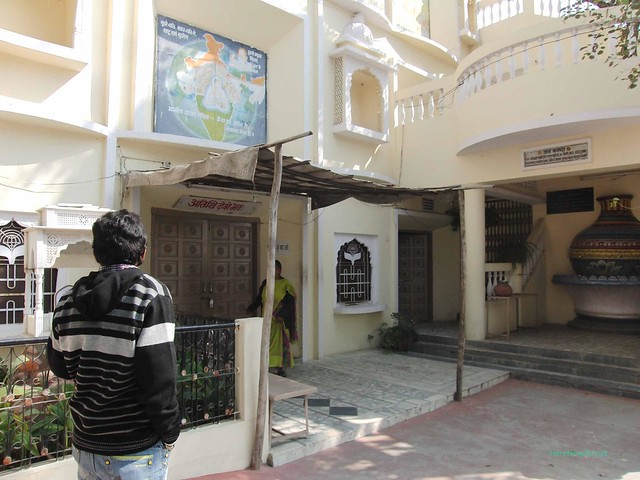
Date? - Children’s Peace Palace, Rajsamand near Udaipur, Rajasthan (India). where it maintains Built on top of a hill overlooking a large lake called Rajsamand. Maintained by Anuvrat Vishva Bharati / Ganuvrat Global Organization (Anuvibha). Administered by Anuvrat Galodaya ("the most important unit of Anuvibha"). Focusses on ahimsa (nonviolence) as the basis for children’s inner transformation. /// Left image shows entrance. Right image shows Children's Parliament.
1992 - August Kranti Stumbh (Freedom Fighters Monument), Shantiniketan Lokvidyapith School, Sangli, South Maharashtra (India). "The staff & students of the institute, on the occasion of the Golden jubilee of the August Revolution of 1942 in our freedom Movement, in which the British Rulers were asked to 'Quit India,' decided to erect a monument in memory of the freedom fighters and the 'August Kranti Stumbh' was built up. The Stumbh, the piller, is 42 feet high. Names of five thousand one hundred sixty freedom fighters, who participated in the freedom movement, and the 93 Martiyers, who laid their lives in the struggle from Sangli, Satara & Kolhapur districts, are inscribed on the pillar. To perpetuate the memory of the freedom struggle & to inculcate the spirit of Patriotism in minds of the new generation, 'A freedom struggle memorial. Trust' has been registered by the living freedom fighters, & various activities are undertaken by the trust, in the Institute & in the three districts, where the freedom fighters had established a 'Parallei Govt.' against the British Rule."

November 1, 1992 - Peace Pagoda, Charlimont, Darjeeling, West Bengal (India). The height of this Stupa is nearly 30 meters. Gives a nice view of Darjeeling and the Kanchenjunga mount of Higher Himalayan Range. "Designed to provide a focus for people of all races and creeds to help unite them in their search for world peace. Like most of the other Peace Pagodas, it was built under the guidance of Nichidatsu Fujii [1885–1985], a Buddhist monk from Japan and founder of the Nipponzan-Myohoji Buddhist Order.


1993 - - "Peace Tree," Shaheed-e-milat Road, Karachi (Pakistan). "24 foot tall metallic sculpture. Commissioned by Pakistan State Life. Scupted and erected by Karachi artist Anjum Ayaz."
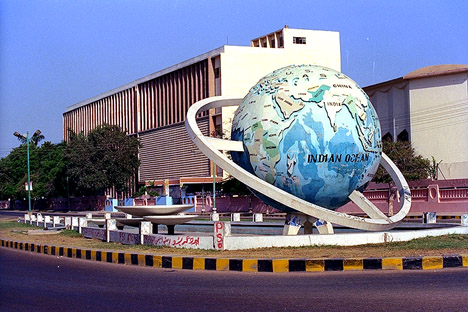
Date? - World Globe, near Dawood College of Engineering & Technology (DCET), Karachi (Pakistan). "Established in 1962, the college is one of Pakistan's finest Engineering institutes and.has honor to be the pioneer to introduce the Electronics, Chemical, Industrial, and Metallurgical Engineering disciplines in Pakistan."


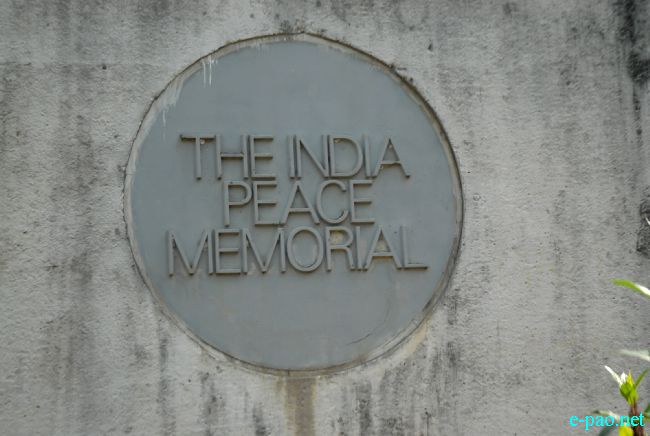

March 21, 1994 - The India Peace Memorial, Tiddim Road, Red Hill, Maibam Lokpa Ching, Manipur State (India). "A hillock about 17 kms south of Imphal City was an action-packed location where a fierce battle took place between Allied and Japanese forces in World War II. Japanese war veterans constructed a monument at the foot of this hill, and it was significantly named 'India Peace Memorial.'"


1995 - Vishwa Shanti Stupa, Wardha, Maharashtra (India). "In 1935, Fuji Guruji from Japan came to Wardha and met Mahatma Gandhi. He put the wish to setup the Stupa (Prayer place for of Budha Community) in India. Gandhi agreed his desire and then after Stanti Stups were built at eight different places in India. One of that Vishwa Shanti Stup is found in Wardha. This Stup is constructed with the help of Japan in 1995. On the Stup the architecture is available describing the history of Lord Goutam Budha [sic]."


February 29, 1996 - Peace Table #3 for Asia, Hall of Peace, Unity Pavilion, International Zone, Auroville, Tamil Nadu (India). By Japanese-American craftsman George Nakashima [1905-1990] of New Hope, Pennsylvania (USA). The Auroville community sprang from the Sri Aurobindo Ashram in Pondicherry, where George Nakashima was once a disciple.





1996 - World Peace Pagoda, high above Phewa Tal, Pokhara (Nepal). "A massive, brilliant white & impressive sight in itself, the shrine is at 1,113 meters, a vantage point which offers spectacular views of Pokhara city and the Annapurna Range (Fishtail, Annapurna & Dhaulagiri Himals). There are three paths up to the pagoda & several small cafes once you arrive." Right 3 images courtesy of Silvia Heerens & Penny Scibner who visited the temple at sunrise in October 2012. Note "WORLD PEACE PAGODA" on right side of gate.
1996 - Butterfly Peace Garden, Batticaloa (Sri Lanka). "Provides counseling & support to children traumatized by civil conflict in the region. In late 2004 the BPG also became a centre for helping victims of the tsunami which devastated the Batticaloa area. Supported by a variety of local & international agencies and charities, including the governments of Canada & the Netherlands, WarChild International and Ashoka International, which named BPG co-founder Paul Hogan a fellow in 2003."
October 23, 1996 - World Peace Pagoda, Vaishali, Vaishali District, Bihar (India). "Vaishali is well-known for its close association with the Buddha. After the Enlightenment the Buddha frequently visited Vaishali. He organized his Bhikshu Sangha on the pattern of Vaishalian democracy."
2005 - World Peace Bell, Vaishali, Bihar (India). #5 of ten "Dharma Bells" of the Light of Buddhadharma Foundation International (LBDFI).
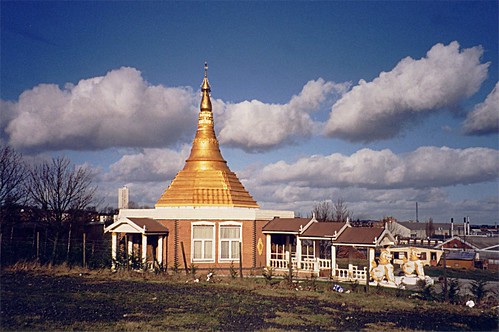

June 26, 1998 - Dhamma-Talaka Peace Pagoda, Buddhist Centre, Edgbaston, Ladywood district, Birmingham (England). "The pagoda is provided so that western people are able to learn about Buddhism. The main financial support however comes from generous donations by the Myanmar community around the country." The Venerable Dr. Rewata Dhamma is a senior Burmese Buddhist Monk who is the prime mover behind the building of the pagoda.




August 6, 1999 - No More Hiroshima : No More Nagasaki : Peace Museum, Indian Institute for Peace, Disarmament & Enironmental Protection (IIPDEP), 537 Sakkardara Road, Nagpur, Maharashtra (India). Museum & institute director, Dr. Balkrishna Kurvey, made presentation at 7th International Conference of Mueums for Peace, Kyoto (Japan), October 8, 2008. Member of International Network of Museums for Peace (INMP).

December 7, 2000 - South African Peace Pagoda, The Manger, Barrydale, Western Cape Province (South Africa). Only peace pagoda in Africa. Consecrated by Sayadaw U Thila Wunta, eminent 90-year-old Burmese monk. "A gift he had long wanted to bestow on Africa, thus completing his dream and mission to promote peace and harmony in every continent of the world.... The building of this seven-meter tall gold structure, crowned with a spherical crystal and copper umbrella, was achieved in three weeks by Sayadaw, three Burmese Monks, 20 Canadians, and several local people."




2001 - Children's Museum for Peace & Human Rights (CMPHR), 9-C/1, 8th East Street, Phase 1, D.H.A, Karachi (Pakistan). "A logical extension of, and in partnership with, the Human Rights Education Programme (HREP) which had been working in Pakistan since 1995... The CMPHR hopes to move into its custom-built premises in 2010" (as seen in the image). Director is Zulfiqar Ali. Member of International Network of Museums for Peace (INMP).

November 2001 - World Peace Pagoda, Lumbini, Kapilavastu District (Nepal). Nipponzan Myohoji Buddhist Order. Lumbini is a Buddhist pilgrimage site near the Indian border. It is the place where Queen Mayadevi is said to have given birth to Siddhartha Gautama, who in turn, as the Buddha Gautama, gave birth to the Buddhist tradition.

September 2002 - Friendship Gate, between Chaman (Pakistan) & Spin Boldak (Afghanistan). "Two large ochre arches covered in blue tiles, overlooking scores of ramshackle Afghan & Pakistani traders' stalls in a one-kilometer no-man's land....completed in September, but its official inauguration has been postponed back several times. Shah blames the Kabul administration. 'The local Afghan authorities want this,' he said, 'but it's the people in Kabul who are making problems.'" "One of nearly 1,000 posts on the Afghan-Pakistani border. At night, the border is largely unguarded, allowing Taliban fighters, weapons & drugs to pass through."

.jpg)

December 12, 2003 - Rotary Peace Monument, Sukhna Lake, Chandigahr, Punjab (India). Incorporates shape of Le Corbusier's "Open Hand" (circa 1965). One of several peace monuments around the world inspired by the Rotary Club of Wagga Wagga, New South Wales (Australia).


June 2004 - Peace Sculpture, Woodstock School, Mussoorie, Uttarakhand (India). Depicts world's oldest known word for "peace" (Sumerian cuneiform). Stainless steel sculpture by Jim Havens of Gibsonburg, Ohio (USA). (Sumerian is a language created out of necessity for the grain trade circa 2,500 BCE.) Photo by EWL Jan07.

May 29, 2005 - Kushinagar World Peace Bell, Nirvana Temple, Kushinagar, Uttar Pradesh (India). Kushinagar is an important Buddhist pilgrimage site and where Gautama Buddha died. "Nirvana Temple is one of the most frequented amongst Buddhism shrines in the world." Not related to the World Peace Bell Association of Tokyo (Japan).
Date? - World Peace Bell, Kushinagar, Uttar Pradesh (India). #7 of ten "Dharma Bells" of the Light of Buddhadharma Foundation International (LBDFI). Kushinagar "is an important Buddhist pilgrimage site, where Buddhists believe Gautama Buddha attained Parinirvana after his death." "Kushinagar is one the four main pilgrimage sites related to the life of Gautama Buddha, the other three being Lumbini, Bodh Gaya & Sarnath."
2005 - World Peace Bell, Sarnath, Uttar Pradesh (India). #6 of ten "Dharma Bells" of the Light of Buddhadharma Foundation International (LBDFI). "The deer park in Sarnath is where Gautama Buddha first taught the Dharma." /// "The World Peace Bell, which can be heard up to 7 kilometres away, has provided a new focal point for worship for the Sarnath community. May its tones dispel & purify all negativities." "Sarnath is the four main pilgrimage sites related to the life of Gautama Buddha, the other three being Kushinagar, Bodh Gaya & Lumbini."
Date? - World Peace Bell, Lumbini (Nepal). #8 of ten "Dharma Bells" of the Light of Buddhadharma Foundation International (LBDFI). "Lumbini "is the place where Queen Mayadevi gave birth to Siddhartha Gautama (Gautam Buddha)." "The bell is adjacent to the eternal peace flame, a short distance from the exact spot where the Buddha was born." "Lumbini is one of the four main pilgrimage sites related to the life of Gautama Buddha, the other three being Kushinagar, Bodh Gaya & Sarnath."

November 6, 2005 - Swaminarayan Akshardham Temple, Yamuna River, New Delhi (India). Click here for the Wikipedia article. There is an older Swaminarayan Akshardham Temple in Ahmendabd, Gujarat (India).

March 2006 - Bridge to Peace Montessori School, Lunugamwehera (Sri Lanka). Operated by Bridge2Peace, a NGO created in Sri Lanka & the USA in direct response to the 2004 tsunami. Provides quality education for children whose families have been affected by the civil war in Sri Lanka. Image shows peace pole on school grounds.


2006 - Circle Wind (PAX2006), Bodh Gaya, Gaya District, Bihar State (India). Second in a series of seven 'peace sculptures' planned for significant sites around the world by Japanese artist Junkyu Muto (who lives in Italy). A World Heritage Site, Bodh Gaya Bodh Gaya (also called Bodhgaya & Buddha Gaya) is famous for being the place of Gautama Buddha's attainment of nirvana (enlightenment).

October 26, 2006 - House of Peace & Dialogue (HPD), Tibetan Children's Village (TCV), Dharamsala, Himachal Pradesh (India). "A peace promoting initiative for youth from all over the world. Based on the firm belief that dialogue and respect for all forms of life are the keys in reducing conflict and creating a platform for coexistence and peace... Inaugurated in the presence and blessings of His Holyness the XVII Galwa Karamapa Rinpoche [in image] & the project's partner Mr. Svein Wilhelmsen, Chairman, Basecamp Explorer Co. & his delegates including Dr. Lars and Ms. Tina Frisk and several other visitors." Dharamsala is the home of the Dalai Lama.
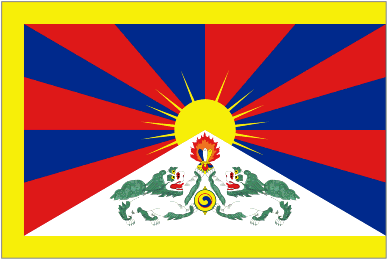
2007 - Vishwa Shanti Stupa / Peace Pagoda, Indraprasht Park, New Delhi (India). "Unveiled by His Holiness the Dalai Lama. The landmark also houses some of Budha’s relics in it. The Stupa stands against the backdrop of some magnificent historical buildings like the Old Fort and Humayun’s tomb. The “Vishwa Shanti Stupa” is 28 meters high. Its construction was inspired by the world famous Shanti Stupa at Sanchi in Madhya Pradesh (qv)....74th in the series of stupas or pagodas around the world."


April 2008 - Sahajeevana Centre for Coexistence, Colombo (Sri Lanka). "In April 2008 we open our first permanent photographic exhibition 'Paradise in Tears: a journey through history and conflict', taking the visitor from the fall of the Kandyian kingdom in 1815 to the victory of Chandrika Kumaratunge as she became Prime Minister in 1994." Member of International Network of Museums for Peace (INMP).



May 2008 - Matrimandir, Peace Area, Auroville, Tamil Nadu (India). Means "Temple of The Mother" in Sanskrit. An edifice of spiritual significance for practitioners of Integral yoga. Called soul of the city. Took 37 years to build. The surrounding Peace Area (right image) has three main features: The Matrimandir itself with its twelve gardens, twelve petals and future lakes, the Amphitheatre and the Banyan Tree. The area is seen as a whole and work in the different sections proceeds simultaneously.
June 25, 2008 - World Peace Bell, Nalanda, Bihar (India). #3 of ten "Dharma Bells" of the Light of Buddhadharma Foundation International (LBDFI). Directly across from the main entrance to the Nalanda archaeological site. Nalanda is "the site of the greatest monastic university of the ancient Buddhist world... The site itself is huge, and villages all around the central enclosure have evidence of ancient remains,... the main stupas of Shariputra & Maudgalyayana, the remains of monasteries & temples and the Nalanda Museum..."



M
U
S
E
U
M2008 - Interfaith Peace Museum, Interfaith League Against Poverty (I-LAP), Islamabad (Pakistan). Chairman is Sajid Ishaq. Member of International Network of Museums for Peace (INMP).

Date? - National Martyrs' Memorial, Savar, Dhaka (Bangladesh). Also called National Monument of Independence? "Dedicated to the countless lives lost during the War of Independence from Pakistan in 1971... Composed of seven isosceles triangular planes each varying in size in its height and base. The highest one has the smallest base while the broadest base has the lowest height. The planes are folded at the middle and placed one after another. The highest point of the structure reaches 150 feet. This unique arrangement of the planes has created a structure that seems to change its configuration when viewed from different angles."

I
N
U
K
S
U
KFebruary 28, 2009 - Inuksuk, Auroville, Tamil Nadu (India). "I am Christian Feuillette, president of AVI-Canada and vice-president of the Board of AV International... In the vast expanses of the Arctic, impressive stone figures have been erected by the Inuit for thousands of years in order to guide travelers for their survival. A symbol of the harmonious presence of man in nature, the Inuksuk has now become an emblem of Canada as a whole, honoring the wisdom and spirit of cooperation of the first inhabitants of North America (Inuit and First Nations). This Inuksuk represents for us the quest of Man from the beginnings of Time aspiring for the light of a new consciousness for humanity... The Inuksuk wanted to land now in Auroville, and here was its place. It represents the affirmation of the presence of Canada in Auroville and a living symbol of unification and aspiration."


P
A
I
N
TI
N
GApril 4, 2009 - “Ahimsa Painting,” Hyderabad (India). "Marking the assassination day of Martin Luther King Jr & the golden jubilee of his pilgrimage to India. The oil on canvas work depicting Gandhi, MLK & President Barak Obama, was done by ahimsa artist Ignatius Xavier Joseph." "4th April happens to make the MAGIC figure 44, the 44th President of America, Barak Obama, fulfilling the Dream of Martin Luther King Jr."



R
I
N
GNovember 2009 - Global Peace Ring, Amin & Co., Suha Bazaar, Lahore (Pakistan). "World's biggest ring." Seven goldsmiths toiled for 577 days to create the 50 x 57 inch ring weighing 74 kilograms. From owner Muhammad Amin Saleem: " 210 FLAGS on the surface of my Ring are an indication of Global Unity and Integrity which is the dream of every eye in this complex modern world... By the grace of Allah, the ceaseless labour of my team and the prayers of my nearest and dearest ones, I feel pride of having the honour in accomplishing the dream of my late father (may God bless his soul rest of eternal heaven) who longed for such a marvellous ring as a token of Love and Peace for the whole world. Global peace has been in constant threat for many years. The only way out is the establishment of Peace Free from territorial bias and prejudice. Peace has its own victories no less renowned than war." Info courtesy of Julie Obermeyer (Peace Museum, Bradford, England).

C
L
O
C
K
January 12, 2010 - Bangladesh Peace Clock, Ouellette Avenue median (north of Wyandotte), Windsor, Ontario (Canada). "Made possible by a generous donation of retired Windsor librarian & active campaigner for world peace Mr. A. Aziz Chowdhury... The cost was $60,000, half of which was supplied by Mr. Chowdhury. Additional donations were graciously made by the clock’s contractors. In keeping with Mr. Chowdhury’s interest in stimulating pedestrian activity in the downtown core, this humble time piece was designed and built at a height that would place it clearly at eye level for people enjoying downtown by foot. The clock is set against a backdrop of three flags: Canada, City of Windsor & Peace flags."


P
A
G
O
D
AJanuary 17, 2010 - Global Vipassana Peace Pagoda, Gorai Creek, Mumbai (India). "Built to promote peace and harmony in the world... In construction for 11 years, is expected to stand as a beacon of Purity which will stand tall for the next 1000 years. Will strengthen India’s image. Towering 325 feet with a 280-feet diameter, one of the largest stone monuments in Asia. Contains the world’s largest stone dome built without any supporting pillars and seats 8000 meditators. More than three times the size of the previously largest masonry structure – the Gol Gumbaz [1659] in Bijapur... Vipassana, an ancient meditation technique of India, was rediscovered by Buddha 2500 years ago but lost its true form since last 2000 years. It was brought back to India and the world by Pujya Shri Goenkaji. This new inning of Vipassana is completing its 40 years this year."

A
I
R
P
O
R
TJanuary 27, 2012 - Bacha Khan International Airport, Peshawar (Pakistan). Date is when Peshwar International Airport was renamed. Note by Damon Lynch, University of Minnesota, February 19, 2016: "The Khudai Khidmatgars of Khan Abdul Ghaffar Khan [1890-1988] -- also known as Bacha Khan -- are to my mind the greatest practitioners of mass nonviolence in a century & possibly in all recorded human history. Books are written about their courageous heroics, but when it comes to their destruction at the hands of the Pakistani state, it's a struggle to find anything much really, especially among peace research. The fact is, the Khudai Khidmatgars, a huge social movement, were quickly and totally destroyed by Pakistan's power elite. In Peshawar today, try finding a museum in which the famous red shirts are on display. Good luck! Try going on a tour that shows the places in which they undertook their nonviolent demonstrations, were massacred, marched, or held their training camps. You can't. The best you can do is visit Peshawar's airport & a nearby university named after Khan, and if you can manage it gaze at Khan's lonely statue stranded amidst the roar of Peshawar's traffic & pollution." NB: No photo of statue found on-line.
July 3, 2012 - Bacha Khan University, Charsadda, near Peshawar (Pakistan). Where Taliban killed 21 faculty & students on January 20, 2016. Also "Government Bacha Khan Girls Degree College?"

P
A
L
A
C
EJanuary 28, 2012 - Shanthi Mahal / Global Peace Palace, Thumboli, near Alappuzha, Kerala State (India). "Chief minister Oommen Chandy will inaugurate Global Peace Palace, a monument for war heroes and victims of terror attacks built by AKB Kumar, an ex-service man, at Thumboli on January 27. The construction of the monument, a replica of Agra's Taj Mahal, started on January 28, 2008. 'I have spent Rs1.25 crore for constructing this monument dedicated to India's war heroes who sacrificed their lives for the nation,' said 61-year-old Kumar at a press conference here on Friday. Kumar was a chief petty officer in the Indian Navy. He had joined the Navy at the age of 15. During his 18 years of service, he participated in the Indo-Pak war in 1971. 'During that war, I lost some of my friends. It was then that I decided to set up a monument for war heroes. But then I did not have enough money for the purpose. Later, I joined as fire and safety engineer at Kochi Refineries and spent all my savings for constructing this monument. I even had to take a bank loan for completing the structure,' he said. Kumar retired from Kochi Refineries last April. The Global Peace Palace has four minarets representing the Army, Navy, Air Force and other forces. The central portion of the structure is dedicated to the victims of terror attacks. Kumar said people could visit the monument free of cost, and that he had sought government help for its protection." /// Click here for more informtion.
M
U
S
E
U
MApril 2013 - U Thant Museum, 31 Windermere Crescent (or Panwa Road), Yangon (Myanmar). Unintentional monument constructed in 1920's. Two-story villa which was the residence of U Thant [1909-1974] in 1951-1957 when he was top advisor to the Prime Minister. Renovated by Yangon Heritage Trust (YHT), a NGO founded by grandson Dr. Thant Myint-U. /// FYI: "Following his death in New York in November 1974. U Thant's body was sent to Rangoon for burial. Just as tens of thousands of people turned out on the streets of what was then Burma’s capital to pay their respects, a group of students made off with his coffin & buried it on the former grounds of the Rangoon University Students’ Union. A mausoleum was built on the site, and on Dec. 11 government troops burst into the campus, killed some of the students, retrieved the coffin and relocated it to the foot of Shwedagon Pagoda, where it still lies today."
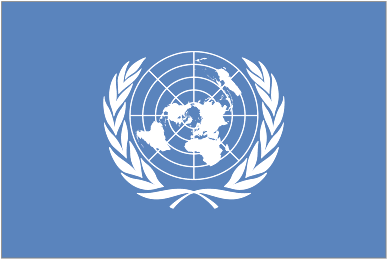

Date? - Taangh Peace Garden, Sargodha District (Pakistan). "A serene environment where people find an opportunity to think about peaceful co-existence by exchange of ideas & experiences among people of different faiths. Flowers of every hue make the garden a burst of color in a landscape of browns & green. Floral plants & fruit trees invite birds that sing their harmonious songs of life to the oasis of peace. Designed by Rubina Feroze Bhatti - a woman peacemaker & general secretary of Taangh Wasaib Organization. /// In the center of the Peace Garden we have a peace monument. Here the word 'peace' is written on colorful pebbles in different languages: Afrikaans, Arabic, Dutch, German, English, French, Irish, Latin, Persian & others. At the top of the peace monument is a peace wheel [& peace well] that is a symbol of peaceful & smooth running of our human journey. The monument wouldn't be complete without cactus, Taangh Wasaib's logo, a constant reminder of survival in harsh environments – of perseverance through difficult circumstances. /// On the brick walls of the garden, you will find the poetry of Sufi poets on bamboo pages. The verses are from the poetry of Bully Shah, Baba Farid & Shah Hussain. Sufi poetry that has served to unify and synthesize the diverse cultural heritage of the people & their folk wisdom. Sufi mysticism still informs the daily lives & shared understandings of millions of people around the world, with its message of love, tolerance, peace, equality & respect for all creation. /// Surrounding the peace monument, we have trails of concrete & granite. Alongside these trails are the Garden of Sight, Garden of Touch, Garden of Hearing, Garden of Smell & Garden of Taste. Here you can focus on personal peace through the five senses. While the peace tree in the west invites us for collective peace. The signs of different religions on peace tree convey a message of hope & peace to everyone who comes here as well as to all human beings in the world."
2013 - World Peace Bell, Sankasya, Uttar Pradesh (India). #2 of ten "Dharma Bells" of the Light of Buddhadharma Foundation International (LBDFI). This is "where the Buddha returned to the earth from the heavenly realm at the end of the seventh Vassa -- one of the eight ancient sites of pilgrimage."



